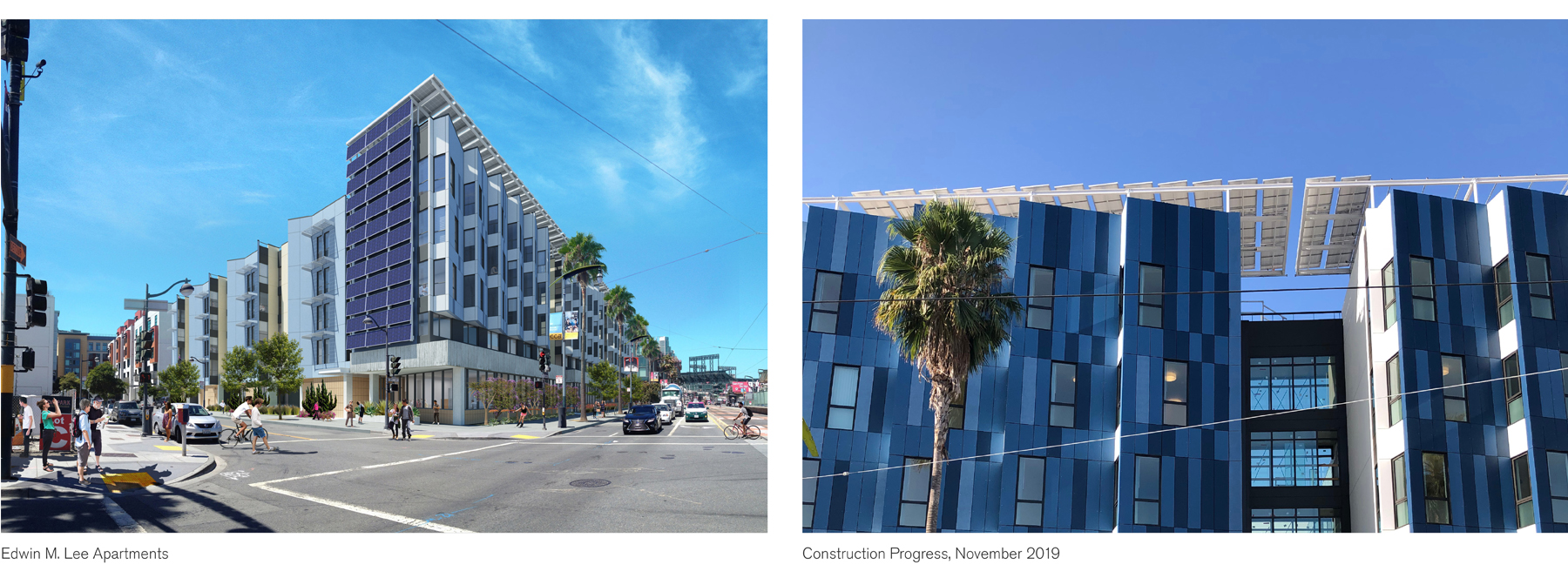
While site pEUI reduction may not be the perfect metric for dense multifamily designs, we look towards other frameworks that can help us communicate the whole-building carbon impact and high-performance characteristics of our designs. The AIA Committee on the Environment’s COTE Top Ten Toolkit, recently adopted by the AIA as the Framework for Design Excellence, is one such tool. The Framework is broad and nuanced, asking questions of the buildings’ performance beyond site energy, such as community, ecology, air quality, resilience and wellness. The Framework moves beyond one metric, to allowing the design to communicate its value in providing housing to low-income families and formerly homeless veterans in a city depleted of housing stock, or expand on how the building’s courtyard can contribute to wellness and restores the post-industrial Mission Bay ecology.
Still, the strength of the 2030 Commitment is its simplicity. It directs designers and engineers toward a very specific target, and by making a clear reach goal from the beginning and asking challenging questions of the design, the result is higher-performance designs. I believe there’s a role for both kinds of frameworks, and that’s why we rely on both.
As co-chair of the AIA 2030 Commitment Working Group through next year, I have found a balance between being “industrious” with “spending [my] time well,” per Thoreau. I am working with many other inspiring, fantastic volunteers to evolve the program to provide more direct feedback on eliminating fossil fuel energy use, and incorporate ways of tracking embodied carbon goals in the tool. I am excited to steer the program towards adopting metrics that directly relate to emissions and carbon beyond site pEUI.
All 252 firms that are engaged with the 2030 program are actively raising a new standard for high-performance design. However, for this movement to work, it needs to grow swiftly. If your firm has not signed on, consider joining. If your firm is signed on but not actively reporting, make steps to change that. If your firm is signed on, reporting, and looking to achieve deeper goals, please share with the AIA’s Peer to Peer 2030 network, or collaborate with a local 2030 roundtable in your region. If a local 2030 roundtable doesn’t exist, form your own! If you or your firm have any questions about the program or our experience with it, please do not hesitate to reach out.